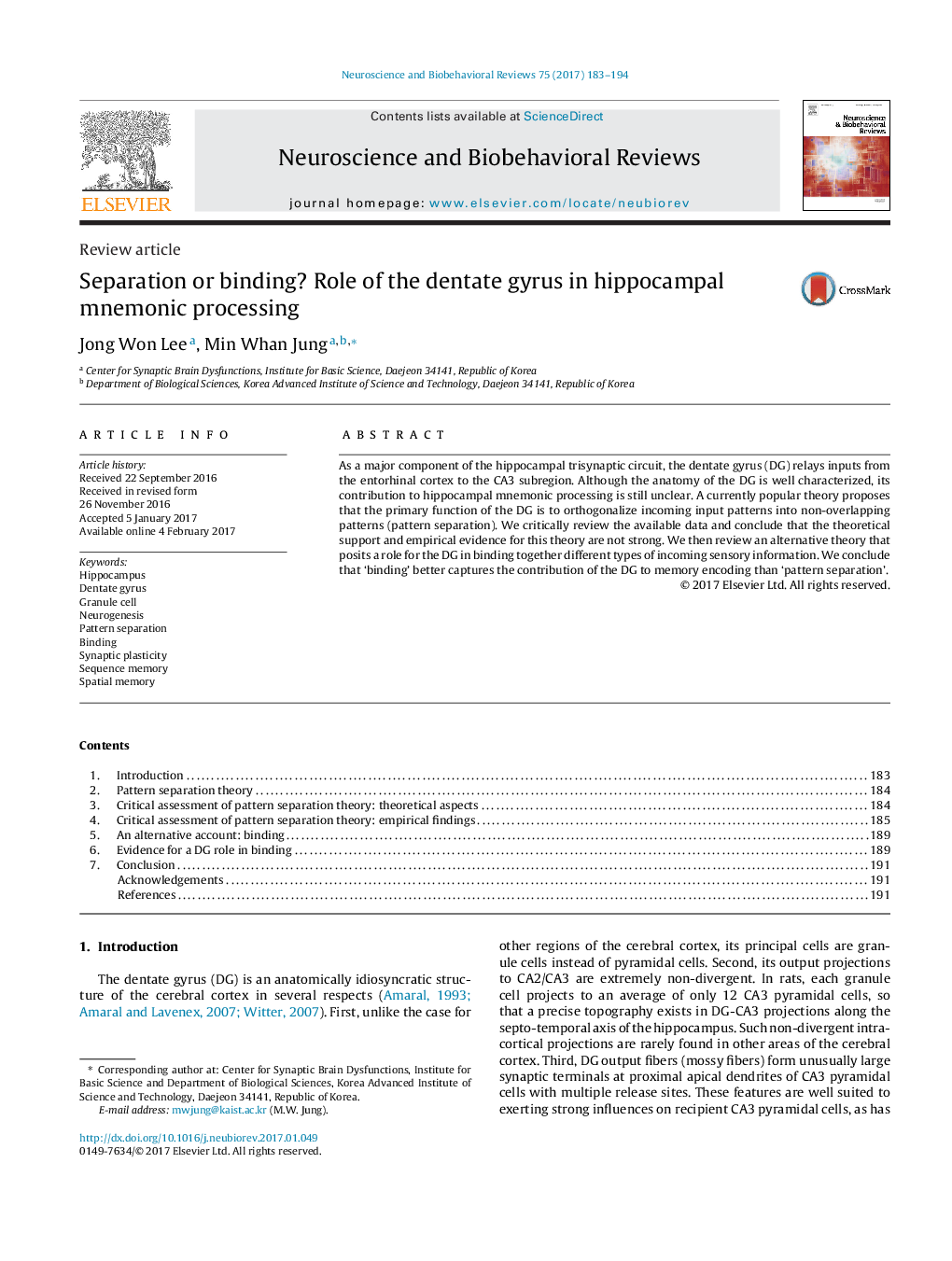| Article ID | Journal | Published Year | Pages | File Type |
|---|---|---|---|---|
| 5043508 | Neuroscience & Biobehavioral Reviews | 2017 | 12 Pages |
â¢Pattern separation is a leading hypothesis for the dentate gyrus.â¢Its theoretical grounds and empirical evidence are not as strong as commonly assumed.â¢Dentate gyrus has also been proposed to bind different types of information together.â¢'Binding' better captures the role of the dentate gyrus than 'pattern separation'.
As a major component of the hippocampal trisynaptic circuit, the dentate gyrus (DG) relays inputs from the entorhinal cortex to the CA3 subregion. Although the anatomy of the DG is well characterized, its contribution to hippocampal mnemonic processing is still unclear. A currently popular theory proposes that the primary function of the DG is to orthogonalize incoming input patterns into non-overlapping patterns (pattern separation). We critically review the available data and conclude that the theoretical support and empirical evidence for this theory are not strong. We then review an alternative theory that posits a role for the DG in binding together different types of incoming sensory information. We conclude that 'binding' better captures the contribution of the DG to memory encoding than 'pattern separation'.
